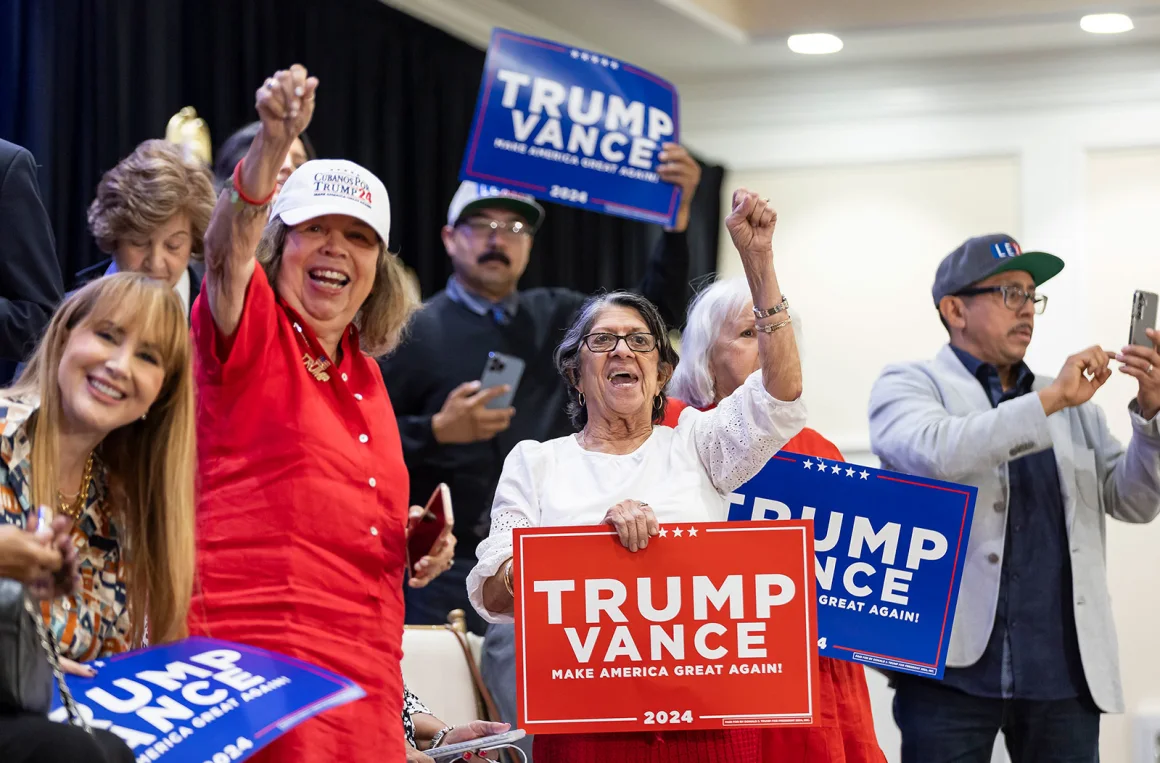
WafricNews – June 1st, 2025
Washington, D.C. – As America’s political landscape continues to shift beneath its feet, one group may quietly be holding the power to reshape the future of Donald Trump’s “Make America Great Again” (MAGA) movement: working-class voters of colour.
New analyses from the 2024 U.S. presidential election reveal that while Trump maintained his dominance among White voters without a college degree—a bedrock of the Republican base—the demographic itself is shrinking. These blue-collar White Americans, once the majority of the U.S. electorate during the Reagan years, now make up just over a third of all voters.
What kept Trump politically afloat in 2024 wasn’t just his traditional base—it was a surprising surge in support from non-White voters, particularly men and those without university degrees. But that support, though crucial, is already showing signs of erosion.
Trump’s Coalition Faces Demographic Reality
Republican strategists once treated Trump’s appeal among voters of colour as a bonus. Now, it’s becoming a necessity. As the U.S. grows more educated and racially diverse, the traditional GOP backbone—White, working-class voters—is shrinking both in numbers and influence.
Between 2012 and 2024, turnout among working-class White voters increased significantly. Yet their share of the total electorate continued to fall, a paradox explained by another key metric: the actual size of the eligible voter pool. America is simply producing fewer non-college-educated White voters, and more college-educated and racially diverse ones.
“No amount of mobilisation can stop the math,” says demographer William Frey. “This is a demographic shift that no party can ignore.”
The Rise of Working-Class Voters of Colour
While White voters with degrees have increasingly leaned Democratic, Trump has seen consistent growth among Latino, Black, and Asian American voters—particularly working-class men—since 2016. Analysts attribute this to a blend of economic discontent, cultural messaging, and Democratic missteps in addressing kitchen-table issues.
But even that foothold may be fragile. Polling shows Trump’s approval ratings among non-White, working-class voters sliding below the vote share he captured in 2024. Key issues such as the cost of living, tariffs, and a hardline immigration stance are creating discomfort among the very voters Trump is hoping to win over.
“There’s no doubt some of Trump’s cultural messages found unexpected resonance,” says Alfonso Aguilar, a conservative strategist focused on Hispanic outreach. “But it would be a huge mistake for Republicans to think those voters are locked in. What matters now is delivery.”
Democrats Struggle to Reclaim the Narrative
The Democratic Party faces its own dilemma. While college-educated voters remain loyal, the party is struggling to reconnect with the economic anxieties of the working class—regardless of race. Organisers say that working-class voters of colour aren’t inherently drawn to Trump, but increasingly feel Democrats have failed to “show up” for them.
“It’s not about liking Trump,” says campaign veteran Dan Kanninen. “It’s about feeling like no one’s offering them real answers.”
A New Battleground Emerges
These changes have transformed how both parties approach elections. Traditionally, Democrats suffered in midterms due to poor turnout among youth and minorities. But as college-educated voters become more dominant—and more reliably Democratic—off-year elections may now tilt in their favour.
Conversely, the GOP may continue to benefit from presidential election turnout, where working-class, non-college-educated voters—across racial lines—vote in greater numbers. But even this advantage is narrowing. Between 2000 and 2023, the number of U.S. adults with a college degree increased by over 32 million, while those without one grew by just 3.5 million.
Among Black and Latino Americans, the number of college-educated voters has nearly doubled. In 2024, people with a four-year degree made up 41% of the electorate—a sharp rise from 32% in 2008.
The Trump Paradox
Despite his polarising rhetoric, Trump’s political survival may now rest in the hands of the very communities he once vilified. Back in 2015, he launched his campaign with sweeping anti-immigrant statements. Nearly a decade later, his legacy may depend on whether working-class Latinos, Black Americans, and Asians feel he can improve their economic circumstances more than his Democratic rivals.
It’s a paradox that underscores the complexity of modern U.S. politics: the future of a movement rooted in White working-class grievance may now be decided by voters of colour facing similar economic struggles.
And as America approaches the 2026 midterms and looks ahead to 2028, one truth is becoming clear—no party can afford to take working-class voters of colour for granted.
By WafricNews Desk.
By WafricNews Desk.


Comment
To post a comment, you have to login first
LoginNo Comments Yet...